
A five-minute video tutorial on Creative Commons Licenses, the five “R’s”, and where to find Open Educational Resources.
- Subject:
- Higher Education
- Information Science
- Material Type:
- Module
- Author:
- Phil Jensen
- Date Added:
- 07/27/2021

A five-minute video tutorial on Creative Commons Licenses, the five “R’s”, and where to find Open Educational Resources.

The University of North Georgia Press and Affordable Learning Georgia bring you British Literature I: From the Middle Ages to Neoclassicism and the Eighteenth Century. Featuring over 50 authors and full texts of their works, this anthology follows the shift of monarchic to parliamentarian rule in Britain, and the heroic epic to the more egalitarian novel as genre.
Features:
Original introductions to The Middle Ages; The Sixteenth Century: The Tudor Age; The Seventeenth Century: The Age of Revolution; and Neoclassicism and the Eighteenth Century
Over 100 historical images
Instructional Design, including Reading and Review Questions and Key Terms
Forthcoming ancillary with open-enabled pedagogy, allowing readers to contribute to the project
This textbook is an Open Access Resource. It can be reused, remixed, and reedited freely without seeking permission.
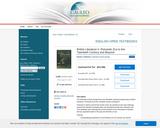
The University of North Georgia Press and Affordable Learning Georgia bring you British Literature II: Romantic Era to the Twentieth Century and Beyond.
Featuring 37 authors and full texts of their works, the selections in this open anthology represent the literature developed within and developing through their respective eras. This completely-open anthology will connect students to the conversation of literature that has captivated readers in the past and still holds us now.
Features:
Contextualizing introductions to the Romantic era; the Victorian era; and the Twentieth Century and beyond.
Over 90 historical images.
In-depth biographies of each author.
Instructional Design features, including Reading and Review Questions.
This textbook is an Open Educational Resource. It can be reused, remixed, and reedited freely without seeking permission.
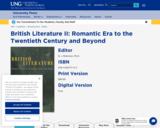
Overview of Brit Lit 2
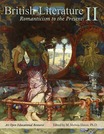
This is a selection of readings designed to support the second half of a two-semester, sophomore-level British literature survey sequence. It includes reflection/research questions, as well as sample term paper topics. It takes the place of a traditional printed textbook.
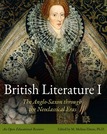
This is a selection of readings designed to support the first half of a two-semester, sophomore-level British literature survey sequence. It includes reflection/research questions, as well as sample term paper topics. It takes the place of a traditional printed textbook.
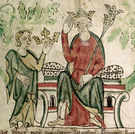
Each of the following essay prompts is suitable as a single midterm or late-semester writing assignment for sophomore-level British literature students. The essays themselves are intended as stand-alone key assignments, rather than a sequence. They are currently used on a rotating basis in British Literature I sections at Palo Alto College -- one per term. While they are designed to align with institutional learning objectives at Palo Alto College in San Antonio, Texas, the prompts are adaptable outside this context, and are available to instructors elsewhere for broader educational use.

Each of the following essay prompts is suitable as a single midterm or late-semester writing assignment for sophomore-level British literature students. The essays themselves are intended as stand-alone key assignments, rather than a sequence. They are currently used on a rotating basis in British Literature II sections at Palo Alto College -- one per term. While they are designed to align with institutional learning objectives at Palo Alto College in San Antonio, Texas, the prompts are adaptable outside this context, and are available to instructors elsewhere for broader educational use.
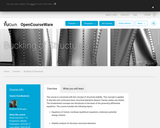
The course is concerned with the concept of structural stability. This concept is applied to discrete and continuous basic structural elements (beams, frames, plates and shells). The fundamental concepts are introduced on the basis of the governing differential equations. The course includes the following topics:
*Equations of motion, nonlinear equilibrium equations, stationary potential energy criterion.
*Stability analysis for the basic structural elements.
*Design methods for stability of basic structural elements.
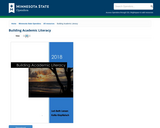
While many study skills, composition and reading skills texts separate these activities into discrete skills to be learned separately, this books recognizes that these skills are interconnected. A student who struggles with the reading will have a hard time writing about it or discussing it. A student who has inadequate strategies for listening to lectures will struggle to see the connections between the lecture and the reading. Therefore, this book moves away from the “skills and drills” texts that are so common in reading and writing textbooks. Instead, this book features process and provides opportunities for students (and instructors) to think about the best ways to approach academic tasks. For example, a “skills and drills” oriented book might teach students how to take Cornell Notes and use graphic organizers, but it does not provide any information for students that would allow them to decide when it would be best to choose one note taking method over the other. This book’s main focus is helping students develop that sort of judgement.
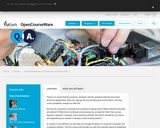
There is no doubt that the quantum computer and the quantum internet have many profound applications, they may change the way we think about information, and they could completely change our daily life.
But how do a quantum computer and a quantum internet work? What scientific principles are behind it? What kind of software and protocols do we need for that? How can we operate a quantum computer and a quantum internet? And which disciplines of science and engineering are needed to develop a fully working system?
In a series of two MOOCs, we will take you through all layers of a quantum computer and a quantum internet. The first course will provide you with the scientific basis by explaining the first layer: the qubits. We will discuss the four types of qubits that QuTech research center at Delft University of Technology focuses on: topological qubits, Spin qubits, Trans qubits and NV Centre qubits. We will teach you the working principles of qubits and, at the same time, the working principles of a computer made of these qubits.
In the upcoming second course, we will introduce the other layers needed to build a quantum computer and a quantum internet, such as the micro-architecture, compilers, quantum error correction, repeaters and quantum algorithms.
These two courses offer you an opportunity to deepen your knowledge by continuing the journey started in our first MOOC, which focused on the applications of a quantum computer and a quantum internet.
Note that these courses offer a full overview of the layers of a quantum computer and a quantum internet, and therefore they will not go into too much detail per layer. For learners seeking to fully understand one specific topic we can recommend other courses authored by QuTech:
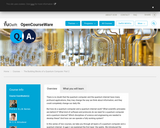
There is no doubt that the quantum computer and the quantum internet have many profound applications, they may change the way we think about information, and they could completely change our daily life.
But how do a quantum computer and a quantum internet work? What scientific principles are behind it? What kind of software and protocols do we need for a quantum computer and a quantum internet? Which disciplines of science and engineering are needed to develop these? And how can we operate a fully working system?
In this series of two courses, we take you through all layers of a quantum computer and a quantum internet. In part 1 we explained the first layer: the qubits. We introduced the most promising quantum platforms and discussed how to do quantum operations on the physical qubits. In part 2 we will introduce the other layers needed to build and operate a quantum computer and a quantum internet, such as the quantum classical interface, micro-architecture, compilers, quantum error correction, networks and protocols and quantum algorithms.
These two courses offer you an opportunity to deepen your knowledge by continuing the journey started in our first course, which focused on the applications of a quantum computer and a quantum internet.
Note that these courses offer a full overview of the layers of a quantum computer and a quantum internet, and therefore they will not go into too much detail per layer. For learners seeking to fully understand one specific topic we can recommend other courses authored by QuTech:
In the field of Quantum Internet: Quantum Cryptography
In the field of topological phenomena: Topology in Condensed Matter
This course is authored by experts from the QuTech research center at Delft University of Technology. In the center, scientists and engineers work together to enhance research and development in quantum technology. QuTech Academy’s aim is to inspire, share and disseminate knowledge about the latest developments in quantum technology.
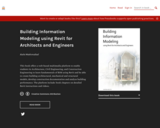
This book offers a web-based multimedia platform to enable students in Architecture, Civil Engineering, and Construction Engineering to learn fundamentals of BIM using Revit and be able to create building architectural, mechanical and structural models, develop construction documentation and analyze building performance. The platform include: book chapters on detailed Revit instructions and videos.
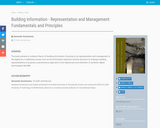
The book presents a coherent theory of building information, focusing on its representation and management in the digital era. It addresses issues such as the information explosion and the structure of analogue building representations to propose a parsimonious approach to the deployment and utilization of symbolic digital technologies like BIM.

This text provides a comprehensive, integrated approach to the study and application of professional public speaking for students and instructors.
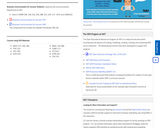
This book, made available by Southern Alberta Institute of Technology (SAIT), is suited for Business Writing, Business English or Business Research/Report Writing courses. This adaptation has reformatted the original text, and replaced some images and figures to make the resulting whole compatible with accessibility software. The adaptation was also conducted in order to provide a greater level of Canadian context. This adaptation has not significantly altered or updated the original 2010 text.
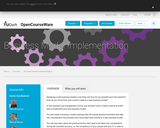
Designing a new business model is one thing, but how do you actually put it into practice? How do you move from your current model to a new business model?
In this business and management course, you will learn how to make a practical action plan to implement your new business model.
You will create a business model roadmap that will include practical activities that take into consideration the possible risks associated with moving to a new business model.
You will also learn about the practical factors that need to be taken into consideration during the transition process, i.e. the competency of your people and your IT, in order to successfully implement a new business model.
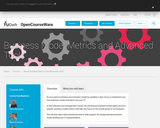
Do you want to enhance your business model by creating a clear focus or implement your new business model innovation into your IT?
In this business and management course, we will discuss business model agility and how specific business model metrics will help you focus on the overall goals of our business.
You will also learn about advanced tools to help support the bridge between business model thinking and IT implementation.
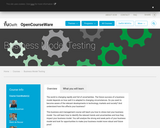
The world is changing rapidly and full of uncertainties. The future success of a business model depends on how well it is adapted to changing circumstances. Do you want to become aware of the relevant developments in technology, markets and society? And understand how this affects your business?
This business and management course will teach you how to stress test your business model. You will learn how to identify the relevant trends and uncertainties and how they impact your business model. You will analyse the strong and weak parts of your business model and look for opportunities to make your business model more robust and future proof.
You will learn through real-world examples from well-known companies and interact with fellow entrepreneurs. By the end of this course, you will be able to stress test your own business model to analyse its future success.

This resource is a Visual Template that can be used for providing the content and assignments for a module in a course. This template has links for all of the required assignments that the student needs to complete in one visual document.